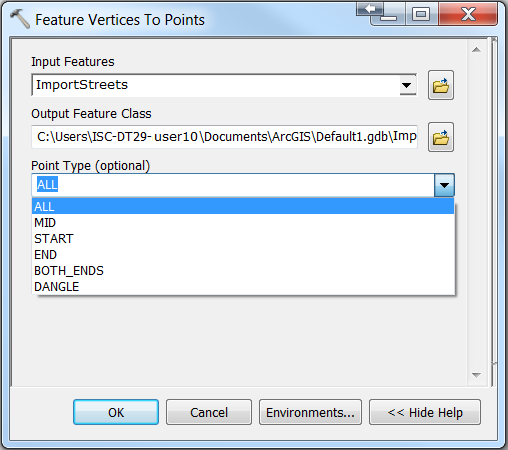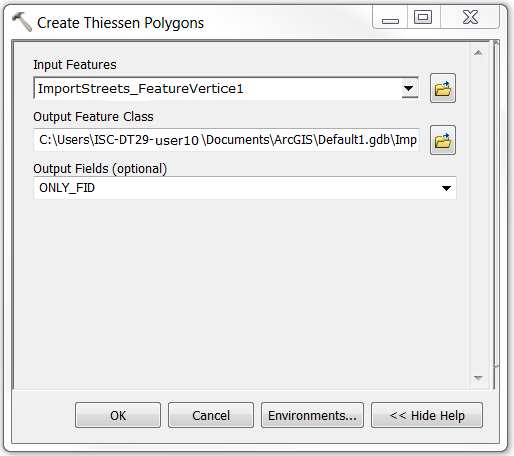HOW TO
Create Thiessen polygons for line features in ArcMap
Summary
Thiessen polygons (also known as Voronoi cells) are created to define and delineate proximal regions around individual data points by using polygonal boundaries. In ArcMap, Thiessen polygons can be created using the Create Thiessen Polygons tool.
However, the Create Thiessen Polygons tool can only be used for point features, as lines do not contain discrete data points. In such cases, the Feature Vertices To Points tool can be used to convert lines into points before using the Create Thiessen Polygons tool.
Note: An Advanced license level is required to run the Feature Vertices To Points tool and the Create Thiessen Polygons tool.
Procedure
The instructions provided describe how to create Thiessen polygons for line features.
- In ArcMap, run the Feature Vertices To Points tool.
- In the Feature Vertices To Points dialog box, select the Input Features and the desired Point Type, and click OK.

Note: If a line data must be cleaned up first before using the Feature Vertices to Point tool, run the Integrate tool and then the Dissolve tool. The Integrate tool is used to make features coincident if the features fall within the specified x,y tolerance, while the Dissolve tool is used summarize many features into a single feature. For more information on cleaning up a line data, refer to following ArcGIS Blog: Cleaning up line data with geoprocessing.
- After converting the line features into points, run the Create Thiessen Polygons tool on the output point feature dataset. For more information on the tool, refer to Create Thiessen Polygons.


Article ID:000015377
- ArcMap
Get help from ArcGIS experts
Download the Esri Support App